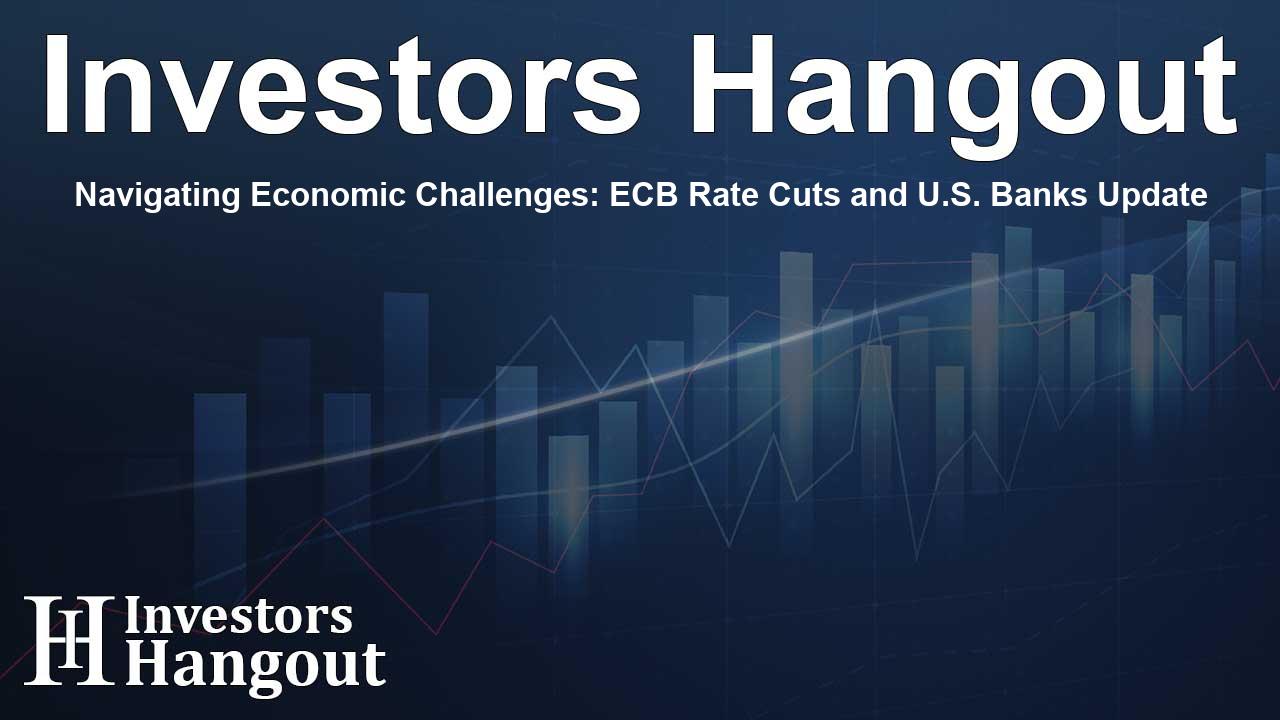Navigating Economic Challenges: ECB Rate Cuts and U.S. Banks Update

ECB Implements New Rate Cuts
The European Central Bank (ECB) has made the decision to cut interest rates for the second time this year, signaling a pivotal change in its monetary policy. They've lowered the Deposit Facility Rate by 25 basis points to 3.50%. Additionally, the Main Refinancing Rate, which is used for short-term banking loans, now stands at 3.65%.
Even with these adjustments, the ECB is proceeding cautiously in normalizing its monetary stance, primarily due to high inflation rates that persist above its target. Strong wage growth adds another layer of complexity to managing inflation. Furthermore, recent macroeconomic forecasts have shown a slight reduction in GDP growth estimates for this year and the next two. Although inflation is expected to gradually approach the ECB’s 2% goal by 2026, core inflation estimates for the current year have been raised slightly.
Market analysts largely predicted this rate cut and believe there may be another reduction in December. However, the likelihood of an additional cut in October seems low given the current high inflation rates and only minor changes in growth forecasts.
Federal Reserve Grapples With Mixed Inflation Data
As the U.S. Federal Reserve gears up for its next policy meeting, recent reports from the Department of Labor reveal that inflation levels have dipped, reaching the lowest point since early 2021. This could suggest a slowdown in inflationary pressures within the U.S. economy, but the data’s subtleties add layers of complexity to the Federal Reserve's decision-making process.
The headline Consumer Price Index (CPI) showed a month-over-month increase of 0.2%, which met expectations. However, core CPI ticked up slightly more than expected at 0.3%. This rise introduces a note of caution for the Federal Reserve as they consider how this data fits into the broader economic picture.
Additionally, the Producer Price Index (PPI) has reported an unexpected decline to 1.7%, indicating some easing of pressures. Notably, the supercore CPI, which tracks the cost of services excluding volatile categories, surged by 0.33%—marking the largest increase since April, driven by rising transportation costs.
These figures have significant implications, suggesting that the Federal Reserve may continue to adopt a cautious approach regarding aggressive rate hikes in upcoming meetings.
Challenges for U.S. Banks Amid Rising Unrealized Losses
The financial stability of U.S. banks is under scrutiny, as a recent report reveals that unrealized losses on investment securities reached $512.9 billion in the second quarter of the year. This staggering figure marks the 11th consecutive quarter in which banks have reported losses, highlighting ongoing vulnerabilities in the banking sector.
Furthermore, the Federal Deposit Insurance Corporation (FDIC) has noted an increase in the number of banks considered problematic, now totaling 66, which constitutes about 1.5% of all U.S. banks. This rising number sheds light on the financial pressures affecting a segment of the banking system.
Looking Ahead in the Financial Sector
The changing landscape for both the ECB and the Federal Reserve highlights the delicate balance they must strike while navigating high inflation and sluggish growth projections. Investors and analysts are keeping a close eye on upcoming developments from both institutions.
Frequently Asked Questions
What recent actions has the ECB taken regarding interest rates?
The ECB has reduced its Deposit Facility Rate to 3.50% and the Main Refinancing Rate to 3.65% in response to high inflation.
How does the current inflation rate affect U.S. monetary policy?
While recent inflation data shows some easing, it has added complexities that may prompt the Federal Reserve to keep a cautious approach to rate adjustments.
What are the implications of U.S. banks' unrealized losses?
U.S. banks are facing significant unrealized losses amounting to $512.9 billion, raising concerns about their stability and the pressures within the banking sector.
How has GDP growth been adjusted in recent forecasts?
GDP growth estimates have been slightly lowered for this year and the next two, reflecting ongoing economic challenges.
What potential outcome is anticipated for further rate cuts?
Although the ECB could consider additional rate cuts, the chances for a reduction in October appear limited due to ongoing high inflation and slow growth projections.
About The Author
Contact Lucas Young privately here. Or send an email with ATTN: Lucas Young as the subject to contact@investorshangout.com.
About Investors Hangout
Investors Hangout is a leading online stock forum for financial discussion and learning, offering a wide range of free tools and resources. It draws in traders of all levels, who exchange market knowledge, investigate trading tactics, and keep an eye on industry developments in real time. Featuring financial articles, stock message boards, quotes, charts, company profiles, and live news updates. Through cooperative learning and a wealth of informational resources, it helps users from novices creating their first portfolios to experts honing their techniques. Join Investors Hangout today: https://investorshangout.com/
The content of this article is based on factual, publicly available information and does not represent legal, financial, or investment advice. Investors Hangout does not offer financial advice, and the author is not a licensed financial advisor. Consult a qualified advisor before making any financial or investment decisions based on this article. This article should not be considered advice to purchase, sell, or hold any securities or other investments. If any of the material provided here is inaccurate, please contact us for corrections.
